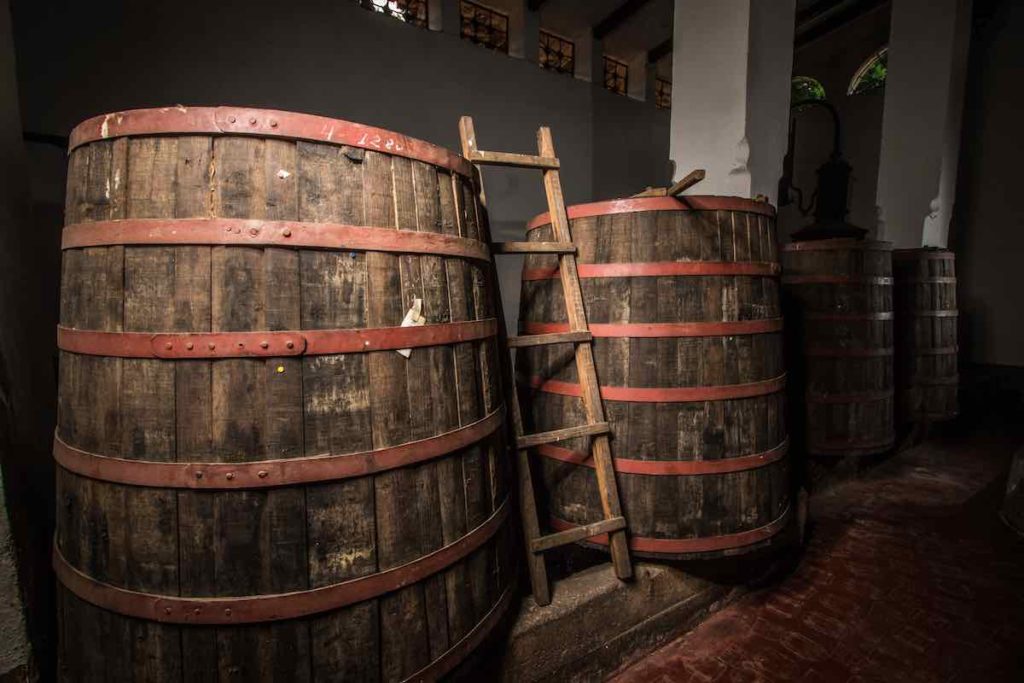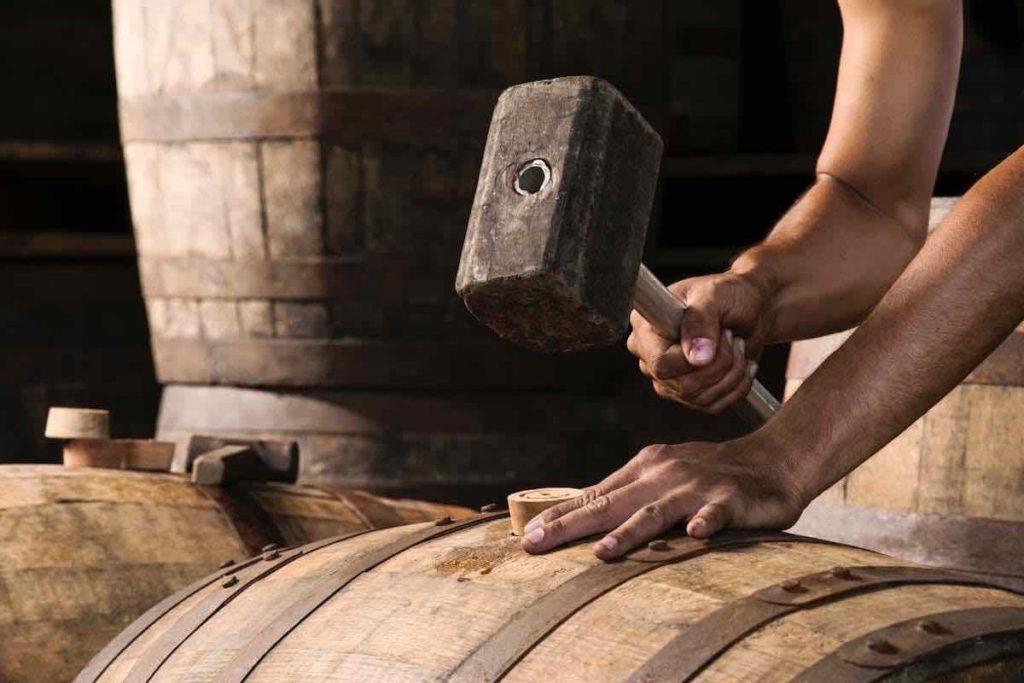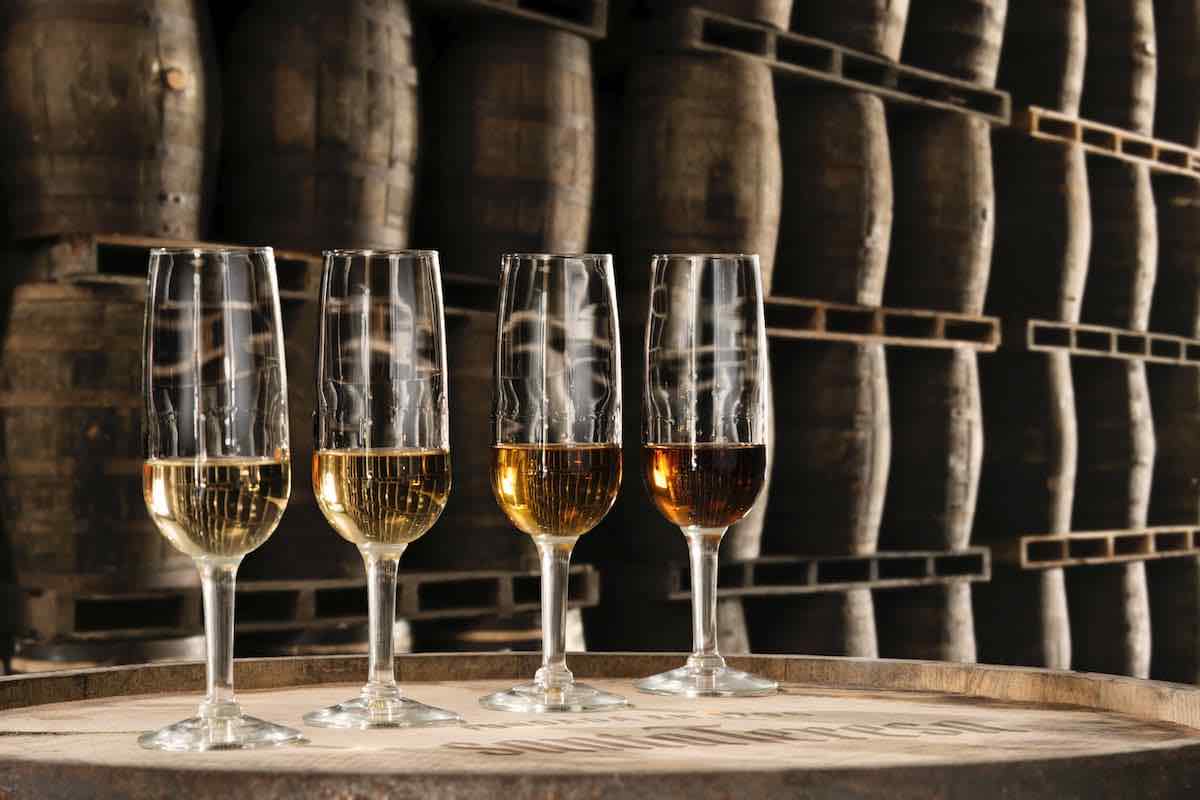If you have even a casual interest in rum, you’ve likely come across the term “solera.” It may sound like the title of a big-budget sci-fi flick about solar exploration, but it actually refers to a distinct (and sometimes controversial) method of aging that’s used by a small number of largely South American rum makers.
To get a better grip on the process, I consulted Marlo Gamora, a veteran of Dante in NYC who currently works as the North American brand ambassador for Santa Teresa 1796, a Venezuelan rum that has been produced in the solera style since 1992.
What Is Solera Aging?
“Solera is a process for aging liquids such as wine, beer, vinegar, brandy, and rum by fractional blending in such a way that the finished product is a mixture of ages, with the average age gradually increasing as the process continues over many years,” Gamora explains.
What this means in practical terms is that the barrels used to age the liquid (collectively referred to as “the solera”) are stacked in four rows. Rather than emptying entire barrels to create a blend, the “fractional blending” that typifies the solera process empties a portion of each barrel. Some of that extracted liquid goes on to make the bottled product, and the rest is used to refill the other barrels.
In the case of Santa Teresa 1796, each barrel in the solera is emptied by half. The rum drawn from the fourth row, which is closest to the ground (solera comes from the Spanish word suelo, for “floor”), is transferred to French limousin vats, where it will be further matured prior to bottling.

Meanwhile, the now half-empty (or half-full?) barrels in the fourth row are topped off with rum drawn from barrels in the third row. As this action depletes the third row by half, it is in turn topped off by the second row. The same relationship holds for the second and first row. Lastly, that first row is topped off with a blend of three different rums aged between four to 35 years, allowing the process to continue indefinitely without fully depleting any of the barrels in the solera.
The Drawbacks of Solera Aging
If this sounds like a whole ordeal, that’s because it is.
“First of all, it is very labor intensive. We draw liquid from each barrel with extreme care not to overdraw,” Gamora says. “In the solera, the barrels are fixed, so the workers and the pump must move around. It is far easier to empty a full barrel that has been taken out of the cellars to a specific area, or fill an empty barrel to the top and then take it to the cellar.”
Aside from the extra labor costs, it also comes with increased inventory.
“Additionally, there is an ‘untouchable’ amount of liquid that always remains in the solera as the barrels are never fully emptied. There is a cost associated with that inventory that can never be sold,” says Gamora.
The Benefits of Solera Aging
And yet, there’s a reason why Santa Teresa, and other makes of solera rum, accept these added costs and inconveniences.
“We believe the extremely slow and never-ending blend of the different types of distillates and ages that go into our solera allows for a smoother, richer, more refined end-result,” says Gamora.

In addition to its effect on the spirit’s taste profile, the solera system also makes for a more consistent product.
“From year to year the liquid changes very little. Consistency is precisely one of the elements that the Solera tries to achieve,” Gamora says.
And yet, solera is also a long-term improvement strategy.
“Over a longer arc, we believe the liquid has gotten better as the whole solera matures,” he continues.
The Fine Print
However, it’s difficult to find an ironclad definition for the solera process, as those who practice it implement it in slightly different ways.
For instance, Santa Teresa models its process on the solera traditions of Spanish sherry and brandy makers. But Gamora notes that Santa Teresa’s approach differs in two key ways. While the entire aging process for solera sherries takes place in the solera, Santa Teresa ages a separate lot of rum to refill the solera and matures the rum extracted from the fourth row in vats for further maturation.
As previously mentioned, the solera process has sparked controversy in the rum community, primarily over the question of age statements. Some makers have included the oldest rum used in their solera process on the bottle, creating confusion for consumers that may not know the difference between a solera-aged rum and a traditionally-aged rum.

Under Venezuelan law, Santa Teresa can only include the age of the youngest rum in its blend on the bottle, which in this case would be a four-year. But the maker has decided to forgo an age statement all together, as they feel it wouldn’t do justice to the process.
“In the case of the solera, that number would convey very incomplete information,” Gamora says. “That is why we don’t print an age statement on our bottles of 1796. And when pressed for one, we [would] rather respond, ‘It’s complicated, do you have five minutes so I can explain?’, than just give a meaningless number.”
How Much Does It Really Matter?
Perhaps the most compelling aspect of the solera process is the immortality it grants to the original rum blend. By never fully emptying the barrels, the “mother rum” first laid down in the solera will be present in every bottle from here to eternity, albeit in ever-smaller amounts. Considering that, how much influence can those particles of mother rum, and the rums that followed it, truly impart on the final product?
“It is at once impossible to tell and impossible not to notice,” Gamora says. “How much effect do the remnants of the very first blend, the mother rum laid in the solera in the early ’90s, have on the current bottles? Quite possibly just a little. How about the one that came immediately after that? Just a little bit more. And so on, and on, uninterrupted for almost 30 more years.”
Ultimately, Gamora answers this mathematical question not with numbers, but taste.
“When we do tastings of the solera refill… and we compare it to the final liquid that comes out of the last vat of the solera, the differences are unmistakable.”




Am enjoying Solero Rum purchased from the distillery at Bundaberg Australia atm.
I have just read up on the process, very interesting.
I normally dont like rum but this is definitely a different kettle of fish. 1 rock in a standard measure makes for an extremely nice smooth sipper 🙂
I have been converted, there is a spirits god
Hi, I do sip my selected rums. I do not finish any one prior to purchasing another candidate.
I may have five or so.
Sometimes I choose to sip a rum based on what else is going on. A good robust steak comes to mind.
I am speaking for more choices and diversity within them.